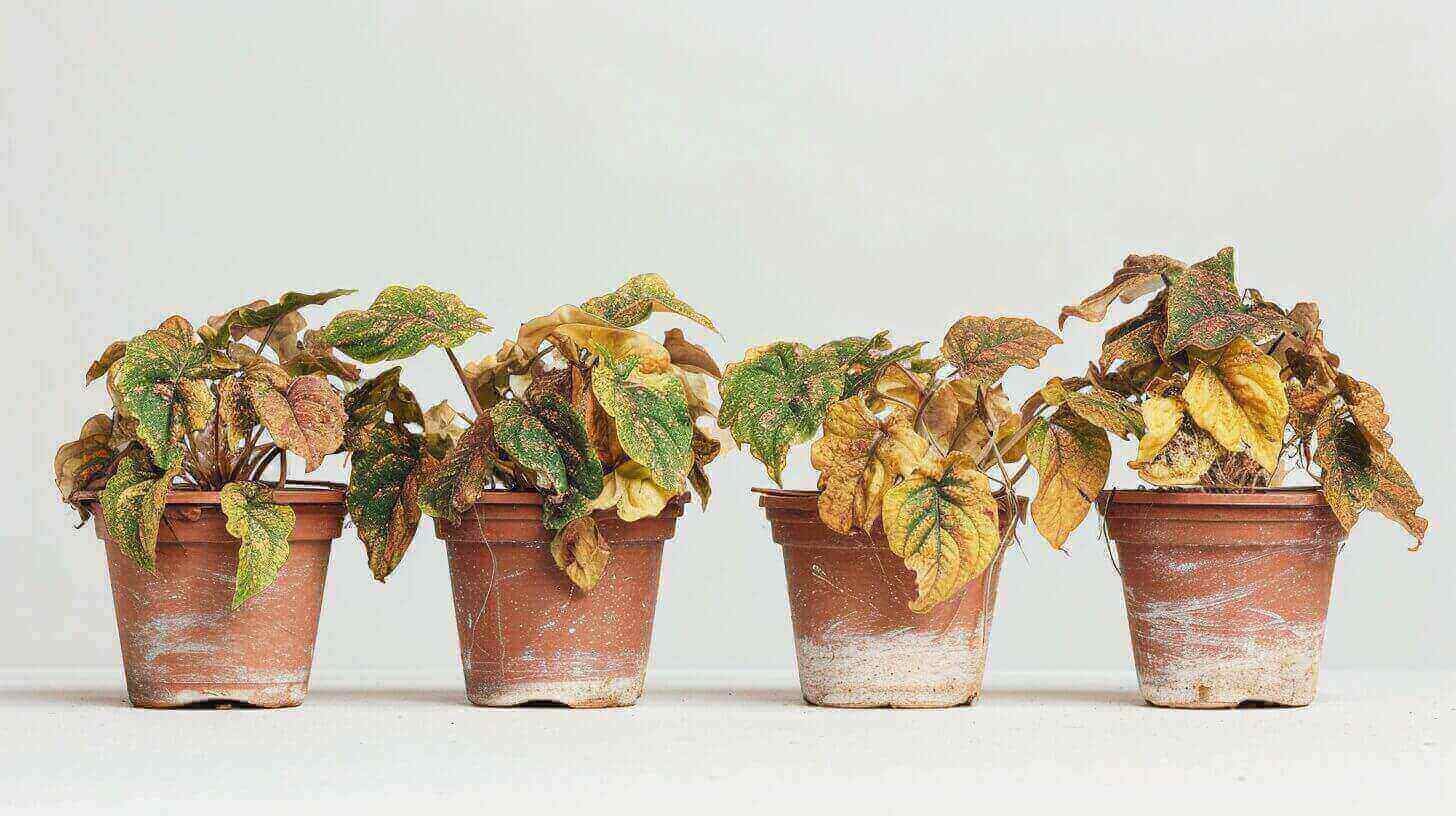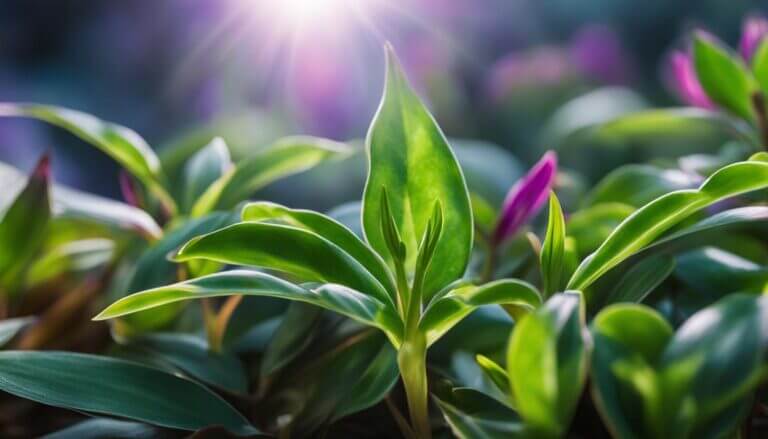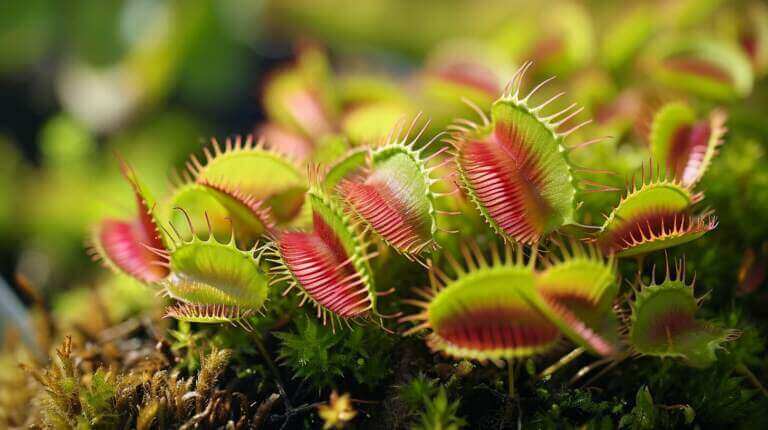Reviving a Wilting Fittonia Plant or Drooping Nerve Plant: Quick Solutions To Save A Drooping Fittonia Albivenis
If you are a proud owner of a nerve plant, also known as Fittonia, you may have encountered the common problem of wilting or drooping leaves. But fear not, because I have some quick solutions to help you revive your precious plant. Whether it’s due to overwatering, underwatering, low humidity, incorrect lighting, poor soil, or other potential causes, I’ve got you covered.
Key Takeaways:
- Wilting and drooping are common problems that nerve plant owners face.
- The causes of wilting and drooping can range from overwatering to incorrect lighting.
- Finding the right balance of watering is crucial for reviving a wilting or drooping nerve plant.
- Increasing humidity and providing proper lighting conditions are essential for plant health.
- The right soil and fertilization practices are important for preventing wilting and promoting growth.
Understanding the Causes of Wilting and Drooping in Nerve Plants
Wilting and drooping in nerve plants can be attributed to various factors that affect their overall health and vitality. By gaining a deeper understanding of these causes, you can effectively address the issues that may be causing your plant to wilt or droop. In this section, we will explore the common reasons for wilting and drooping in fittonias and provide guidance on how to care for and revive your plant.
Overwatering and Underwatering
One of the most common causes of wilting and drooping in nerve plants is improper watering. Overwatering can lead to root rot, as the excessive moisture prevents the roots from receiving the necessary oxygen. This can result in yellowing leaves, wilting, and eventually, plant death. On the other hand, underwatering can cause the plant to dry out and become dehydrated, leading to wilting and drooping.
To find the right balance, it is crucial to establish a proper watering schedule. Check the moisture levels of the soil by inserting your finger about an inch deep into the soil. If it feels dry, it’s time to water your plant, but if it still feels moist, wait a bit longer. Remember that nerve plants prefer consistently moist soil, but not overly saturated conditions.
Low Humidity and Incorrect Lighting
Nerve plants naturally thrive in high humidity environments, as they originate from rainforests. When exposed to low humidity levels, the plant’s leaves can lose moisture rapidly, causing wilting and drooping. Similarly, incorrect lighting conditions can also affect the health of your nerve plant. Insufficient light can lead to weak growth and drooping foliage.
To address these issues, consider increasing the humidity around your plant by misting its leaves regularly or placing a tray of water with pebbles nearby. This will help create a more favorable environment for your nerve plant. Additionally, make sure to provide adequate indirect or filtered light to promote healthy growth and prevent drooping.
Other Potential Causes
While overwatering, underwatering, low humidity, and incorrect lighting are common causes of wilting and drooping in nerve plants, there are other factors to consider as well. These may include poor soil quality, pests, diseases, or recent repotting. It is essential to examine each potential cause and address them accordingly to revive your wilting or drooping nerve plant.
By understanding the underlying causes and taking appropriate measures, you can effectively revive your wilting or drooping nerve plant. In the next section, we will delve into more detail on how to address these specific issues and provide a comprehensive care guide for maintaining a healthy nerve plant.
Overwatering and Underwatering: Finding the Right Balance
One common cause of wilting and drooping in nerve plants is overwatering or underwatering. Both of these extremes can lead to stress and damage to the plant’s roots and overall health. Finding the right balance in watering is crucial for reviving a wilting or drooping nerve plant.
Overwatering: Overwatering can suffocate the roots of the nerve plant and promote the growth of fungi and bacteria, leading to root rot. Signs of overwatering include yellowing leaves, wilting, and a foul odor coming from the soil.
Underwatering: On the other hand, underwatering can result in dryness and dehydration of the plant. Inadequate water supply can cause the leaves to wilt, curl, and turn crispy. The soil may also become extremely dry and pull away from the sides of the pot.
To determine the right watering schedule for your nerve plant, it’s important to consider its specific needs and the surrounding environment. Factors such as humidity levels, light exposure, and the type of potting mix used can affect the plant’s water requirements.
| Signs of Overwatering | Signs of Underwatering | Proper Watering Techniques |
|---|---|---|
| – Yellowing leaves | – Dry, crispy leaves | – Check soil moisture regularly |
| – Wilting despite moist soil | – Soil pulling away from pot | – Water when the top inch of soil feels dry |
| – Foul odor from soil | – Leaves curling and turning brown | – Use well-draining potting mix |
When watering your nerve plant, ensure that the water penetrates the soil evenly and reaches the root ball. It’s best to water thoroughly, allowing excess water to drain away. Avoid leaving the plant sitting in standing water, as it can lead to root rot.
Addressing Low Humidity and Incorrect Lighting
Nerve plants thrive in high humidity environments, as they are native to rainforests. Low humidity and incorrect lighting conditions can cause wilting and drooping in nerve plants. To prevent these issues and promote healthy growth, it is important to address low humidity and provide the correct lighting conditions for your nerve plant.
Increasing Humidity
To increase humidity levels for your nerve plant, there are several effective methods you can try:
- Misting: Regularly misting your nerve plant with water can help increase humidity levels around the foliage. Use a spray bottle to lightly mist the leaves, ensuring that the water droplets are small and not too heavy.
- Using Humidifiers: Placing a humidifier near your nerve plant can provide a consistent source of humidity. Set the humidifier to a level that mimics the plant’s natural habitat.
- Creating a Pebble Tray: Fill a shallow tray with water and place pebbles or stones in it. Then, place your nerve plant on top of the pebbles. As the water evaporates, it will create a humid microclimate around the plant.
Correcting Lighting Conditions
Incorrect lighting can also cause drooping in nerve plants. Here are some tips to ensure your plant receives the right amount of light:
- Indirect Light: Nerve plants prefer bright, indirect light. Place your plant in a location where it can receive filtered light, such as near a north or east-facing window.
- Avoid Direct Sunlight: While nerve plants need light, direct sunlight can scorch their leaves and cause them to droop. Make sure to protect your plant from intense sunlight, especially during the hottest parts of the day.
- Supplementing with Artificial Light: If you don’t have access to sufficient natural light, you can supplement with artificial light. Use a grow light specifically designed for plants to provide the necessary light spectrum for your nerve plant’s growth.
| Common Signs of Low Humidity | Common Signs of Incorrect Lighting |
|---|---|
| Wilting or drooping leaves | Pale or yellowing leaves |
| Dry soil or potting mix | Leaf burn or scorched edges |
| Cracked or desiccated soil surface | Stunted growth or leggy appearance |
Choosing the Right Soil and Fertilization Practices
When it comes to caring for a nerve plant, choosing the right soil and implementing proper fertilization practices are crucial for its overall health and vitality. The composition of the soil directly affects the plant’s ability to absorb nutrients and water, while fertilization provides essential nutrients for growth and development.
Soil Requirements for Nerve Plants
Nerve plants prefer well-draining soil that allows excess water to escape easily. A good potting mix for nerve plants should consist of organic-rich soil, such as a mixture of peat moss, perlite, and compost. This combination ensures that the soil retains adequate moisture without becoming waterlogged, preventing issues like root rot.
In addition to the proper soil composition, it is essential to choose a pot with drainage holes. This allows excess water to drain freely, further preventing waterlogging and related problems. Remember not to use garden soil or heavy clay-based soil, as they can trap excess moisture and harm the plant.
Fertilization Techniques for Nerve Plants
Fertilizing your nerve plant helps provide the necessary nutrients that may be lacking in the soil. However, it’s essential to fertilize in moderation to avoid overfeeding, which can lead to fertilizer burn and damage the plant.
A balanced, water-soluble fertilizer with equal amounts of nitrogen, phosphorus, and potassium is ideal for nerve plants. During the growing season, fertilize every two to four weeks, following the manufacturer’s instructions for the appropriate dilution rate. In the dormant season, reduce fertilization to once every six to eight weeks. Always be cautious not to exceed the recommended dosage as it can do more harm than good.
| Fertilization Tips for Nerve Plants | Summary |
|---|---|
| Use a balanced, water-soluble fertilizer with equal amounts of nitrogen, phosphorus, and potassium. | Ensures the plant receives essential nutrients for growth. |
| Fertilize every two to four weeks during the growing season. | Provides a consistent supply of nutrients for optimal growth. |
| Follow the manufacturer’s instructions for the appropriate dilution rate. | Prevents overfeeding and fertilizer burn. |
| Water thoroughly before applying fertilizer. | Prevents fertilizer burn and helps distribute nutrients evenly. |
| Avoid fertilizing newly repotted plants for at least six weeks. | Gives the plant time to adjust to its new environment and avoid stress. |
Dealing with Pests and Diseases
When it comes to keeping your nerve plant healthy, it’s important to be aware of common pests and diseases that can affect it. By understanding how to prevent and treat these issues, you can ensure the long-term vitality of your plant.
Common Pests of Fittonia
| Pest | Description | Treatment |
|---|---|---|
| Mealybugs | These small, white insects can often be found hiding in the leaf axils and stem joints of nerve plants. They suck sap from the plant, causing it to weaken and droop. | – Isolate the affected plant to prevent the infestation from spreading – Remove mealybugs with a cotton swab dipped in rubbing alcohol – Repeat treatment weekly until the infestation is gone |
| Spider Mites | These tiny pests are known for their webbing and can quickly multiply, causing wilting and leaf discoloration. They often thrive in dry conditions. | – Increase humidity levels around the plant – Spray the plant with a mixture of water and insecticidal soap – Repeat treatment every few days until the infestation is under control |
Nerve Plant Diseases
While nerve plants are generally resistant to diseases, overwatering can lead to root rot, which can cause severe wilting and decline. To prevent root rot:
- Ensure that the pot has proper drainage holes to prevent water from accumulating
- Allow the soil to dry out between waterings
- Use a well-draining potting mix to promote healthy root growth
Revival Steps and Preventive Measures for a Healthy Nerve Plant
Reviving a wilting nerve plant requires a systematic approach to address the underlying issues. Here are the key steps to bring your plant back to life:
1. Check Moisture Levels:
First, assess the soil moisture by gently inserting your finger about an inch into the soil. If it feels dry, it’s time to water your plant. However, if it feels overly wet, hold off on watering to avoid further damage.
2. Adjust Watering and Lighting:
Water your nerve plant thoroughly, allowing excess water to drain. Then, adjust your watering schedule to ensure the soil remains consistently moist but not waterlogged. Similarly, provide your plant with bright, indirect light to promote healthy growth and prevent wilting.
3. Increase Humidity:
Nerve plants thrive in humid environments, so increase humidity around your plant. Mist the leaves regularly, use a humidifier nearby, or create a pebble tray by placing a tray filled with water and pebbles beneath your plant’s pot. This will help prevent wilting and maintain lush foliage.
4. Address Soil Issues:
Ensure your nerve plant is potted in well-draining soil that allows excess water to escape easily. A mix of peat moss, perlite, and vermiculite can provide the ideal conditions. Avoid using heavy and compacted soil that can lead to water retention and root rot.
5. Deal with Pests and Diseases:
Regularly inspect your plant for pests like mealybugs and spider mites. Use organic pest control methods or insecticidal soap to eliminate infestations. Additionally, prevent root rot by avoiding overwatering and ensuring proper drainage.
By following these revival steps and incorporating preventive measures, you can enjoy a healthy and vibrant nerve plant that enhances your indoor space.
FAQ
How can I revive a drooping fittonia plant?
To revive a drooping fittonia plant, you may need to adjust its watering schedule. Overwatered plants can become limp and droopy. Ensure the plant is getting enough water but avoid overwatering.
What causes droopy leaves in fittonia plants?
Droopy leaves in fittonia plants may be a sign of overwatering. Too much water can cause the plant to droop. It’s important to keep the plant in a well-draining potting soil to prevent waterlogging.
How can I save a drooping fittonia plant?
To save a drooping fittonia plant, place the plant in indirect sunlight and ensure it’s getting enough water. You can also mist the plant to increase humidity.
How often should I repot a fittonia plant?
Fittonia plants like to be slightly root-bound, so you should only repot the plant every 2-3 years or when the plant is visibly outgrowing its pot.
Can fittonia plants tolerate direct sunlight?
Fittonia plants prefer indirect sunlight. Direct sunlight can cause the leaves to burn and the plant to droop.
Does a fittonia plant need a humidifier?
Fittonia plants, being tropical rainforest plants, appreciate a humid environment. Using a humidifier can help keep the plant healthy, especially in dry indoor conditions.
What type of fertilizer is best for a fittonia plant?
A balanced liquid fertilizer is suitable for fittonia plants. It’s best to fertilize the plant during the growing season and follow the instructions on the fertilizer package.







